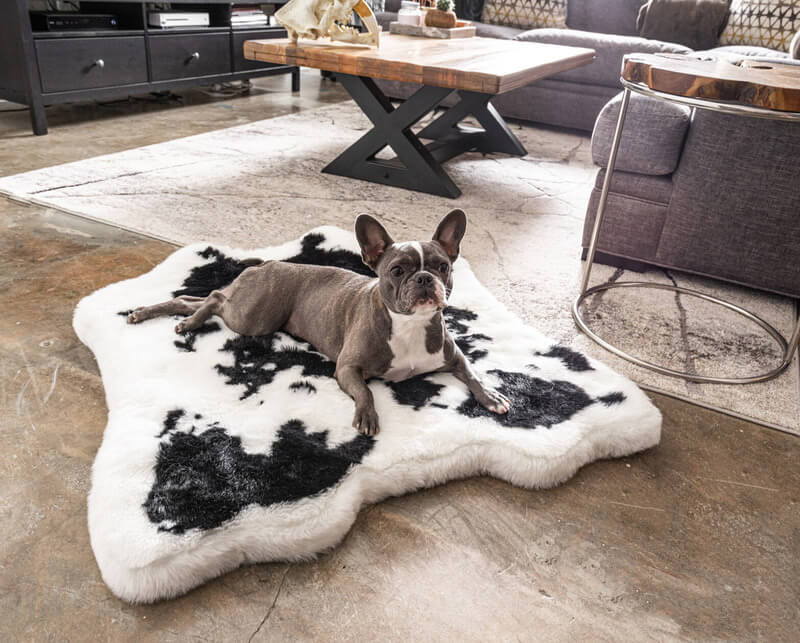 A paralyzed dog will need the help of its pet parent for a wide range of things – this can include feeding, playing, and of course, peeing. If your dog has just become paralyzed due to an accident, disease, or old age, this might put you in a state of panic. How do you care for your paralyzed dog? Will your pet be happy? Fortunately, a paralyzed dog can still have a good quality of life as long as you’re diligent in ensuring they are safe and healthy. And one of the most important things you will have to learn as a parent of a paralyzed dog is helping them learn how to pee.
A paralyzed dog will need the help of its pet parent for a wide range of things – this can include feeding, playing, and of course, peeing. If your dog has just become paralyzed due to an accident, disease, or old age, this might put you in a state of panic. How do you care for your paralyzed dog? Will your pet be happy? Fortunately, a paralyzed dog can still have a good quality of life as long as you’re diligent in ensuring they are safe and healthy. And one of the most important things you will have to learn as a parent of a paralyzed dog is helping them learn how to pee.
Why You Need to Help Your Paralyzed Dog Pee
If your dog is paralyzed in its hind end, it may have an issue with urinary incontinence or even have problems releasing urine completely. A vet can attach a urinary catheter to your dog, but if the vet believes you can manually remove your dog’s urine from its bladder, then you will need to help your paralyzed dog pee constantly. If the issue is incontinence, you will still need to manually release your dog’s bladder since urinary tract infections are expected with paralyzed dogs. If they have frequent infections, bacteria could get into the kidneys and cause a more severe problem. This means that learning to express your dog’s bladder is critical for your dog’s health. Though there are general ways to do this, it takes some trial and error to create a system that you and your dog are comfortable with. Don’t worry; with time and proactive, manually expressing your dog’s bladder will become a simple habit that can help your dog enjoy a longer and healthier life.
Steps to Manually Expressing Your Paralyzed Dog’s Bladder
Here are the steps to manually expressing your paralyzed dog’s bladder:
Step 1: Locate The Bladder
Whether your dog uses a wheelchair or not, you can easily find its bladder by lifting its hind legs. A dog’s bladder is usually located by your dog’s belly, under its hind legs. Though this is the usual location, it does shift slightly as it fills with urine. For male dogs, the bladder can be found above the middle of the penis, and for female dogs, it can be located a little further back, above the hind legs. The bladder feels like a furry tennis ball found in the lower belly of your dog. It’s more of an oval shape than a ball, and its consistency is like that of a balloon. It also grows more prominent as it accumulates more urine.
Step 2: Find a Location for Expressing the Bladder
Because you will be releasing urine, you need to find the best location for expressing your dog’s pee. This can be inside a bathroom, on the toilet, in a tub or shower, or your backyard.
Step 3: Start Applying Steady Pressure
If your dog’s bladder is filled with urine, you’d need to apply firm pressure to express urine. You can make a fist with your hands and gently apply firm pressure on the bladder. If your dog is in a dog wheelchair, you can easily use both of your hands. Otherwise, you can lift your dog’s hind legs with one hand and manually express its urine with your free hand. Once the urine is expressed, slowly lighten the pressure using your fingers. Continue to push until the steady stream of urine becomes a trickle and until it stops. Release the bladder and wait for 30 seconds, and try again. The goal of manually expressing your dog’s urine this way is to empty the bladder.
Step 4: Wipe Your Dog with Baby Wipes
If there’s urine on your dog’s body, wipe it with baby wipes as urine left on sensitive areas can cause burning and scalding.
Tips
- You need to manually express your paralyzed dog’s bladder 3 to 4 times a day or even 4 to 6 times a day for smaller breeds.
- It’s essential to create and stick to a bathroom schedule so your dog’s bladder will not stretch and retain urine. Constantly emptying your dog’s bladder is key to preventing urinary tract infections and potential kidney disease.
Conclusion
A paralyzed dog can be challenging to care for, especially when the problem involves peeing and pooping. Thankfully, with the help of handicapped dog accessories such as a dog wheelchair, you can manually express your dog’s bladder on your own. A paralyzed dog can either be incontinent or entirely unable to express urine, so you, as its pet parent, would have to do it yourself. Though it can be a challenge, creating your bathroom schedule and making sure you and your dog are comfortable with your method are the key components to making sure your disabled dog is healthy.
Related:



